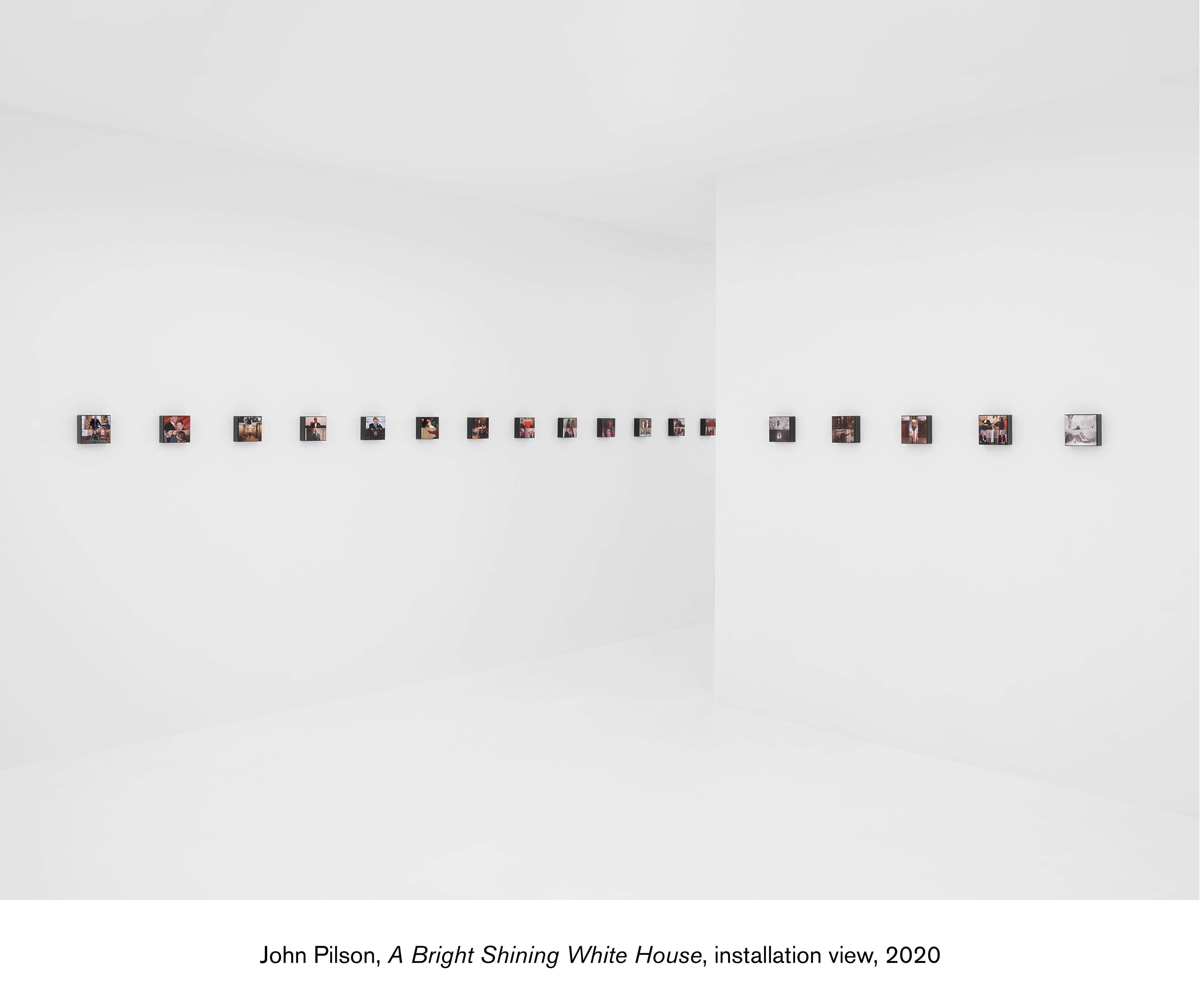





ASHES/ASHES is pleased to present A Bright Shining White House or: What I Did After the 2016 Election Instead of Smoking Cigarettes, a solo exhibition by John Pilson. The exhibition will be on view October 28 – November 1, 2020. Gallery hours are Wednesday–Sunday, 12–6pm.
I think of Instagram as an ecosystem inhabited by photography, a point of origin and context that influences and inspires by providing an equal measure of opportunity and imposed limitations yet it is no more or less suitable as a venue, platform, context for the needs of artists or art audiences than other, equally generative, ecosystems such as glossy magazines, family albums, newspapers, or blogs.
Instagram has an endless appetite for humor but what it really wants is speed; a nano-second to nano-second present tense. For all the talk of social media’s juiced and addictive dopamine hits, the feeds have provided me with the best alternative to the only hit I still miss with gnawing passion: the nicotine hit, and there’s no doubt in my mind that 2016 would have found me reaching for the Marlboro Reds if I hadn’t had Instagram and Google Image Search in my pocket.
The work on the wall was all made on a smartphone, often in sustained daylong bursts, in front of a TV, usually without pants on, and always posted immediately to Instagram upon completion. In simplest terms, they are an exercise in pattern recognition and real-time visual response to the daily apparitions and 24-Hour News Cycle interpretations of actions and consequences emanating from The Trump White House.
The term “performance art” had become ubiquitous within journalism and political commentary as had “Reality TV” used as an adjective yet neither scratched the surface as descriptors of the collapsed white dwarf dense proximity of Völkisch rhetorical kitsch, weaponized appropriation, B-movie plots, face planting Las Vegas stand-up acts and highbrow Postmodern Learning from Las Vegas scholarship. In more rarified art circles/institutions/schools, the name John Heartfield was being solemnly intoned in a “Break Glass In Case Of Emergency” sort of way. The most unnerving part however was the heated variations on the question: “What can art do in a moment like this?” and the implication that artists hadn’t been asking the same question the year before, and the year before that, etc.
There’s a personal irony having spent so much time with smartphone and thumb making pictures from other peoples’ pictures having sneered myself at the Capital “A” Appropriation that was the dominant, not too mention coolest, mode of photography at the moment I fell for the medium as a student in the late-80s. Critique and deconstruction, the medium as the message, the “Lost in the Supermarket” punk social realist détournement as Baudrillard 12” Club Remix. “Walking Around Photography”, as Richard Prince still refers to that wide swath of other photographic activity, was in the toilet.
The interesting or maybe the redeeming bit about that irony dawned on me within the less-than-a-minute it took to recognize, image search, and combine (using thumbs only) a jpeg of Trump senior advisor Stephen Miller and a jpeg of Joe Turkel as ‘Lloyd’ in Stanley Kubrick’s The Shining into a square diptych and another second to post the collage to Instagram all before the Stephen Miller I was also watching on CNN disappeared in a cloud of brimstone—I mean, was replaced by an advertisement directed at people diagnosed with mesothelioma.
The decisive moment as derisive moment. Henri Cartier-Bresson and Sherrie Levine sitting in a tree…
John Pilson is an artist and educator based in New York City. His work is held in the public collections of The Solomon R. Guggenheim Museum, New York; The Whitney Museum of American Art, New York; The Metropolitan Museum of Art, New York; The New York Public Library, New York; Dallas Museum of Art, Dallas; Stedelijk Museum, Amsterdam; Hamburger Kunsthalle, Hamburg; MG+MSUM Moderna Galerija, Ljubljana; and FNAC, France.
